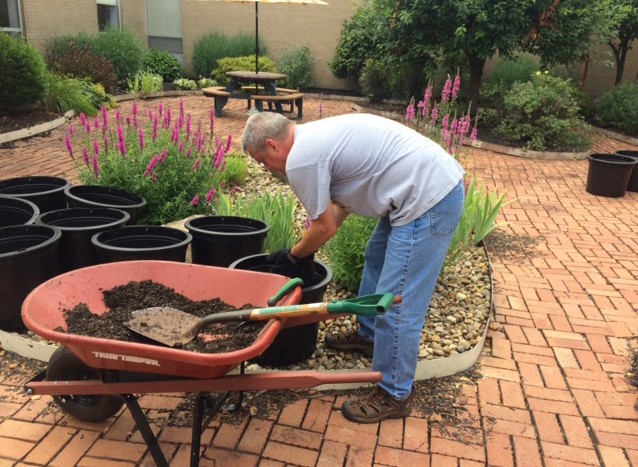As if Photosynthesis was not complicated enough, there are actually different variations of how plants convert CO2 (Carbon dioxide) to C6H12O6 (Carbohydrates). Plants have various physiologies to adapt to various environments on earth. Alfalfa for instance can remain persistent and prolific during certain drought episodes due to its deep taproot that can help the plant utilize deep water sources. In term this causes the Alfalfa legume to be sensitive to poorly drained soils that are not very permeable to surface water. So the question someone could ask is; do all desert plants have long roots? The answer is no, but one way desert plants conserve water and grow in a hot and arid climate is by the way they photosynthesize.
The three main types of photosynthesis are C3, C4, and CAM (crassulacean acid metabolism). In college I had to memorize some of their pathways and mechanisms, but I will highlight what gives one an advantage over another and what types of crops, forages, and weeds have specialized C3 and C4 photosynthesis. This will tell us why they can do well in certain climates and times of the year and when we can expect certain plants to be more abundant.
Rubisco is the name of the enzyme (protein) that “grabs” the CO2 molecule and puts it into the assembly line that will create the carbohydrates. It is known as the most abundant protein in the world. When we examine the quality of feed in our forages, it is rubisco that makes up most of the protein value in the forage analysis. That is one of the main reasons leaves are desired over stems in hay.
C3 photosynthesis is the predominant way plants will take in carbon dioxide and produce carbohydrates. In C3 photosynthesis Rubisco takes the CO2 and it is reduced into carbohydrates all in the same place and time. By that, I mean in the same cell chloroplast and during the day (sunshine) when the stomata are open and the CO2 is entering the cell and the water is leaving through the same opening. The issue with this is that it has the greatest water loss and during very high photosynthetic times (July) it becomes stressful for the plant. Another issue is that oxygen is generated during photosynthesis and the oxygen will inhibit rubisco and slow photosynthesis down when the system is running very fast. It seems counterintuitive, but the slow down allows the plant to deal with too much light that could cause damage. Ever notice that cool season grasses do not grow too fast in July and August? Cool season grasses have a C3 photosynthesis mechanism.
Now let us transition to some of the C4 grasses, also known as “warm season grasses” such as corn, sorghum, crab grass, sugarcane, bermuda grass, and foxtail. These plants have rubisco in one cell and they have a mechanism of pulling the CO2 in a different cell that is connected by openings between the cells called plasmodesmata connecting the two cells together. So what happens is that the plant can concentrate its CO2 where the rubisco is located and prevent that oxygen inhibition caused in the C3 mechanism. These plants don’t have that high sunlight, July inhibition. In addition to that, the specialization of the cells allows for approximately 40% less water usage per weight of CO2 reduction. This just means that it is 40% more efficient in water usage on average. There is always variation among species. C4 plants can also partially close their stomata to prevent water loss and because they concentrate the CO2 in a different area, the oxygen will not inhibit the rubisco enzyme. This is one of the major reasons why warm season paddocks are desired in a rotational grazing operation. It allows for growth during the July and August time period, when the cool season, C3 grasses are inhibited and not actively growing.
Here is the misconception; many dicots (broadleaves) are also C4 plants, it is not just the grasses! Sedges and many of the Amaranthus species are C4 plants, they seem to be the largest plant families in this C4-broadleaf category. So Palmer Amaranth and Spiny Amaranth, along with the sedges do great in July and August. The fact that they are C4 plants could be contributing to this phenomenon. Knowing this allows a farmer to possibly tackle a weed before it takes over a field when a desirable cool season crop could be growing slowly or possibly dormant. Only 1% of all known plant species have C4 metabolism and even less have CAM metabolism.
Finally there is CAM photosynthesis. CAM is found in desert plants. What these plants do is open up their stomata at night to allow CO2 in to minimize the water loss during the hot days. The CO2 is stored in the plant vacuole as malic acid during the night. When the desert sun comes out, the stomatal openings are closed and the CO2 is “removed” from the malic acid to then be introduced to rubisco and make carbohydrates. By comparison, CAM is even more water efficient than C4 is. If C4 is 40% more water efficient, CAM is 83% more efficient as compared to most C3 photosynthetic processes. Cacti, many succulents, and the pineapple have CAM photosynthetic metabolism.
Resources:
- Taiz and Zeiger, Plant Physiology Ed. 3
- Christin and Edwards, The C4 plant lineages of planet Earth, Journal of Experimental Botany







